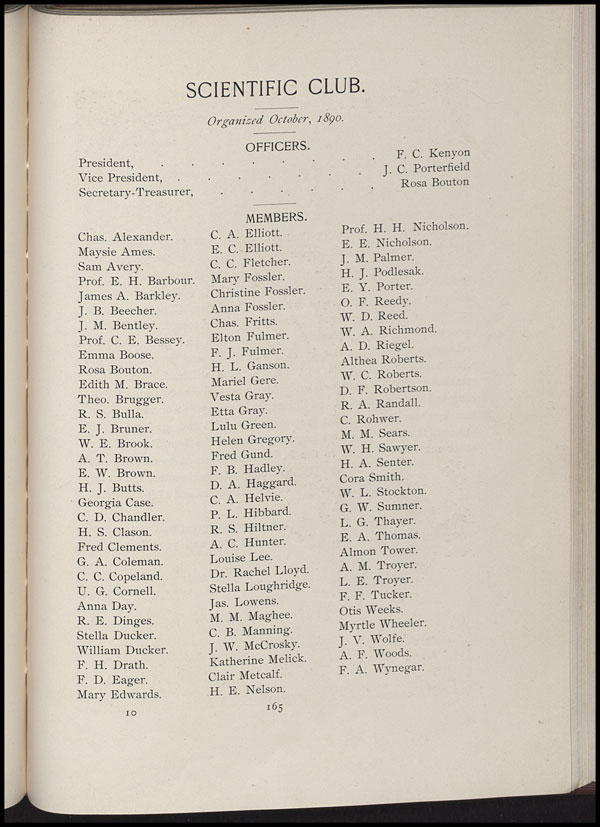Projects
History of the UNL Science DepartmentsProject Editor: Susannah Hall, UCARE, 2008 Table of Contents
Science Clubs
|
SCIENCE CLUBS AT UNL
Besides the chemistry clubs and the SemBot discussed elsewhere in this project, several other scientific societies fluctuated between existence and oblivion in the first few decades of the twentieth century.
A scientific club existed during the 1880s, as mentioned in the records of the Sem Bot. However, a roster from the 1892 yearbook states the club was organized in October, 1892.

| The Scientific Club -1892 Annual |
The club does not appear in any later annuals, and presumably Sigma Xi takes its place later in the 1890s. Sigma Xi was established in 1886 at Cornell University for workers in the engineering societies, but soon afterwards felt that other sciences should be part of the society. In June of 1897, the University of Nebraska established its own chapter.
Many of the clubs changed as the colleges separated more fully. The Agricultural College and the Engineering College both established smaller communities more easily formed into societies. Many of the clubs went defunct soon after their creation, and the stress and change of the 1920s and 1930s led to a decline in professional societies.
Engineers established their own society in 1900, although they had been listed as "departments" separate from the colleges until that point. In 1908, societies and clubs for the separate engineering fields began to develop with the organization of the American Institute for Electrical Engineers. Institutes and societies soon developed for civil engineering, architectural engineering, etc. The camaraderie of the Engineering College and the Engineering Society and the insurance of more jobs for engineers after graduation regardless of the economic situation ensured these clubs lasted much more consistently than did those of the Arts & Sciences College and the Agricultural College. However, this project was unable to fully investigate the engineering programs at the University of Nebraska.
By 1902, several other clubs and seminars had come into existence, although exactly how long they existed and in what capacity is unknown. A Zoological Club existed, but might have been consumed by the Pre-Medic society. The Bird Club was founded by L. Bruner in the late 19th century, but did not last long. In the 1902 yearbook, there were botanical, chemical and physics seminars, but these do not appear in other annuals.
In the second half of the twentieth century, many of the departments revived or started chapters of scientific clubs. Today, there are several clubs within the biological sciences, the chemistry department has both an ACS student affiliate and a chapter of the Phi Lamda Upsilon chemistry honorary, and the physics department has the Society of Physics Students. The busy lives of science students sometimes make extracurricular activities difficult to fit into schedules, but they continue to serve the need for community in science departments.
| 
